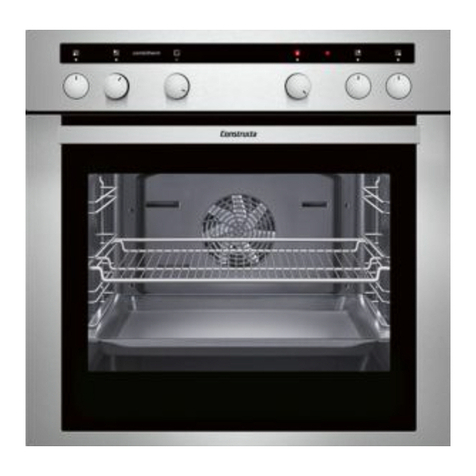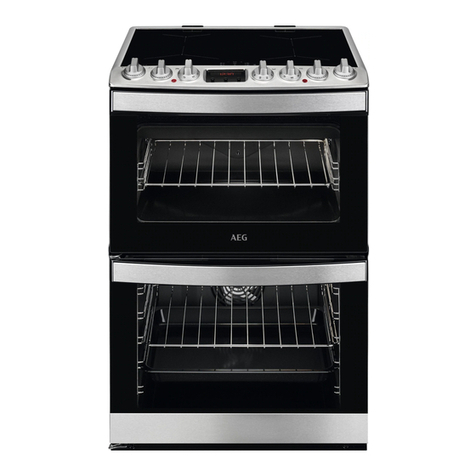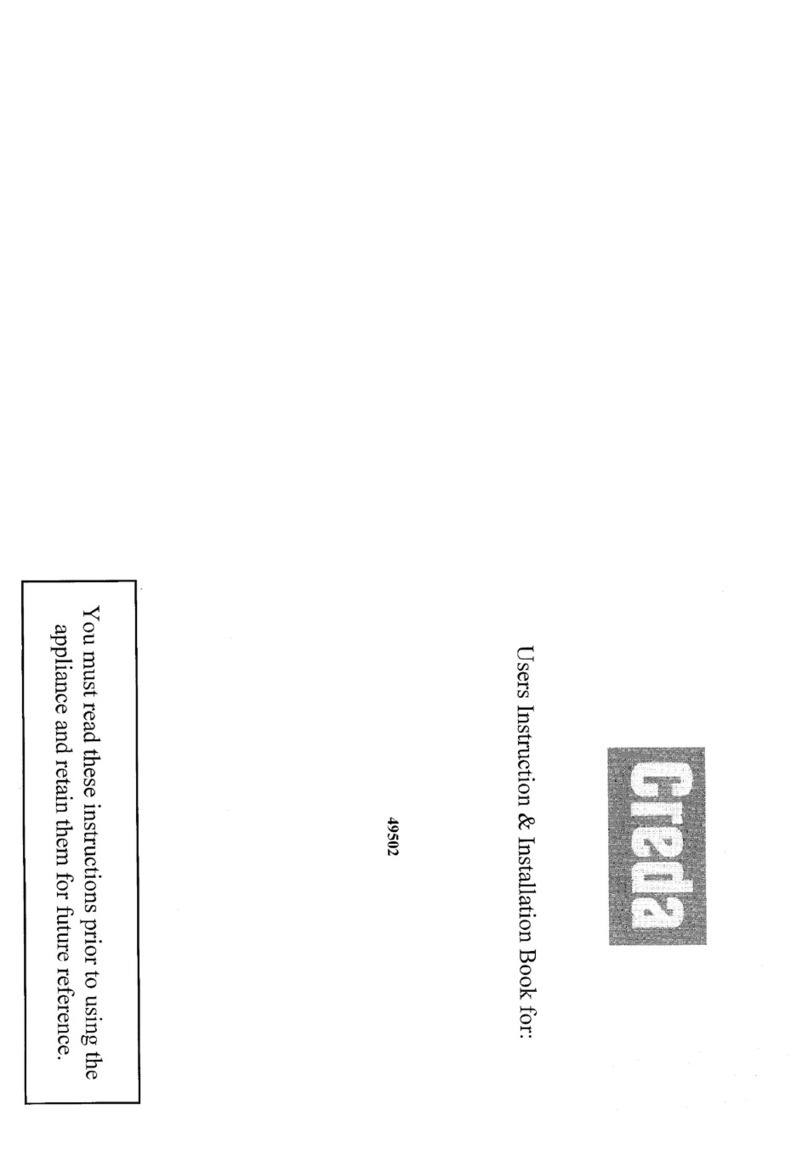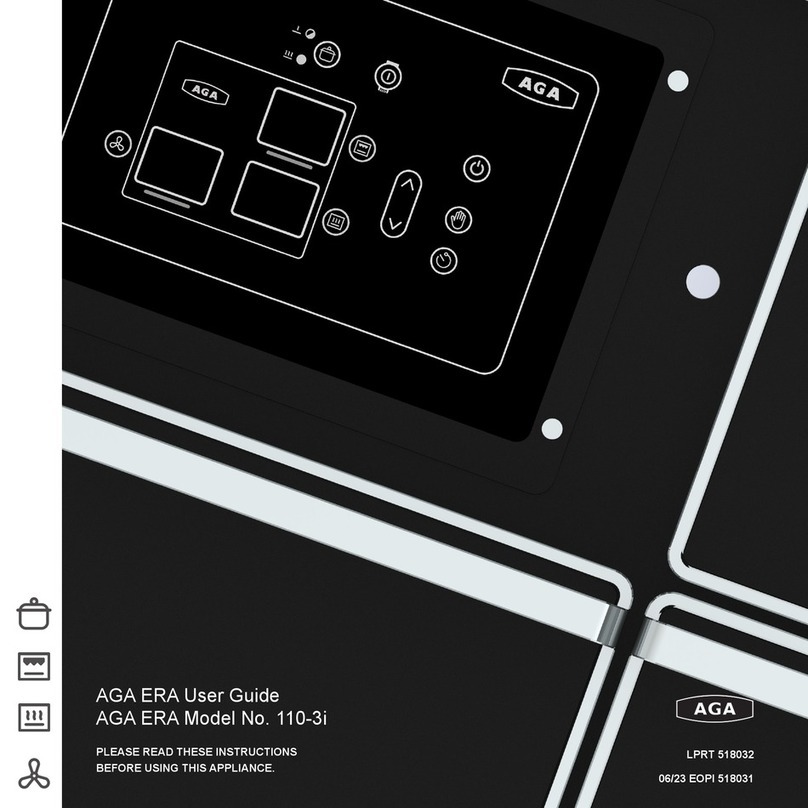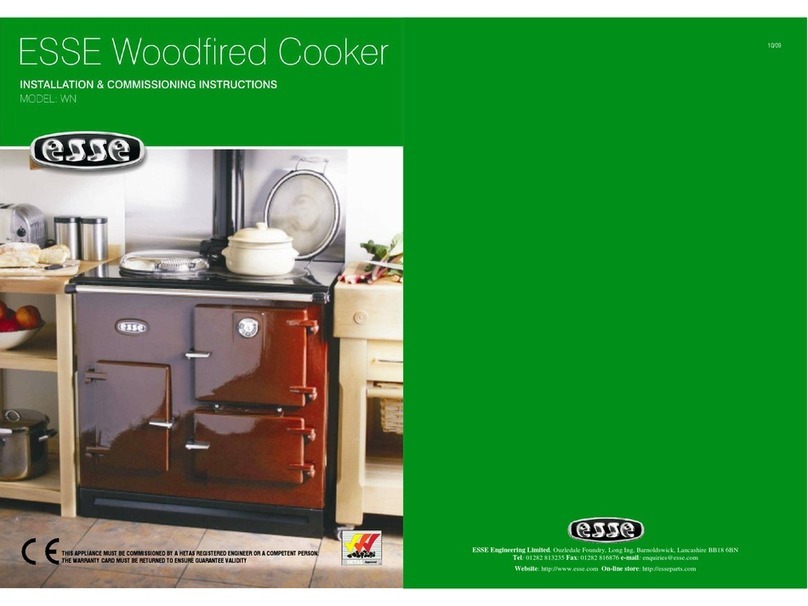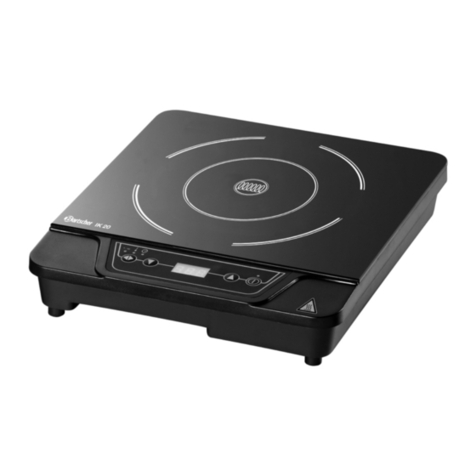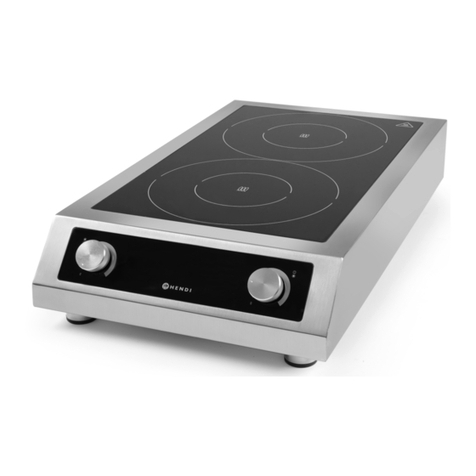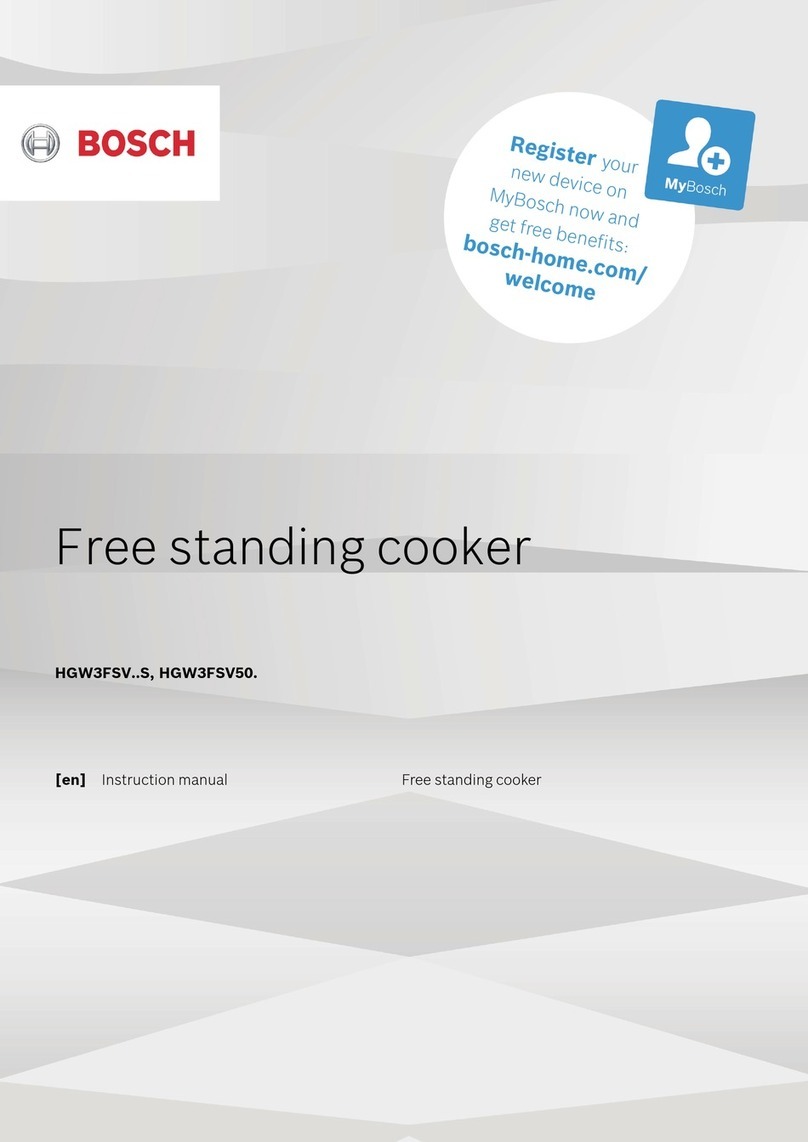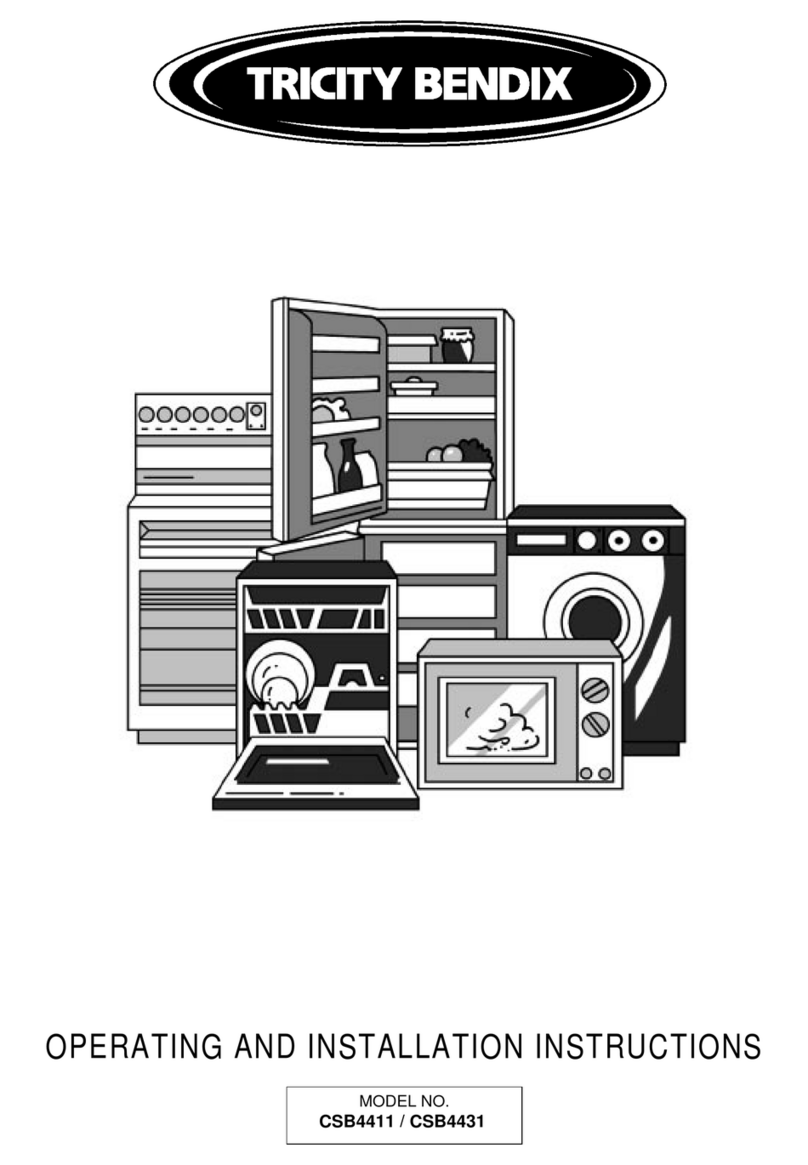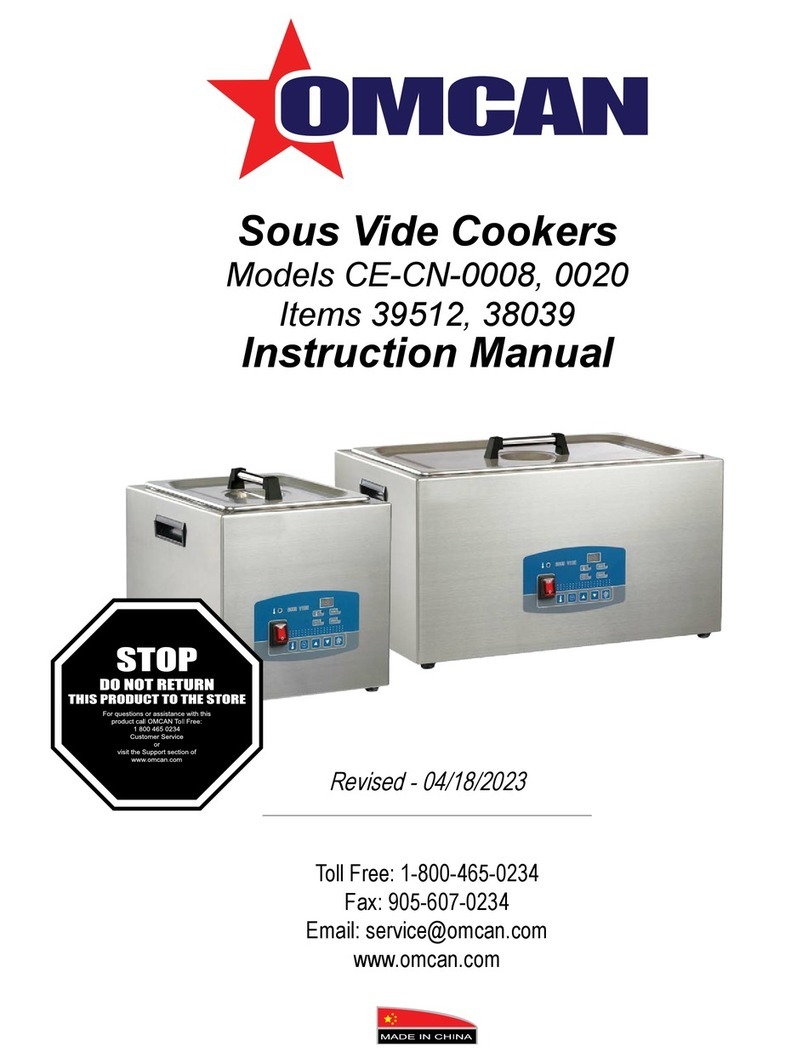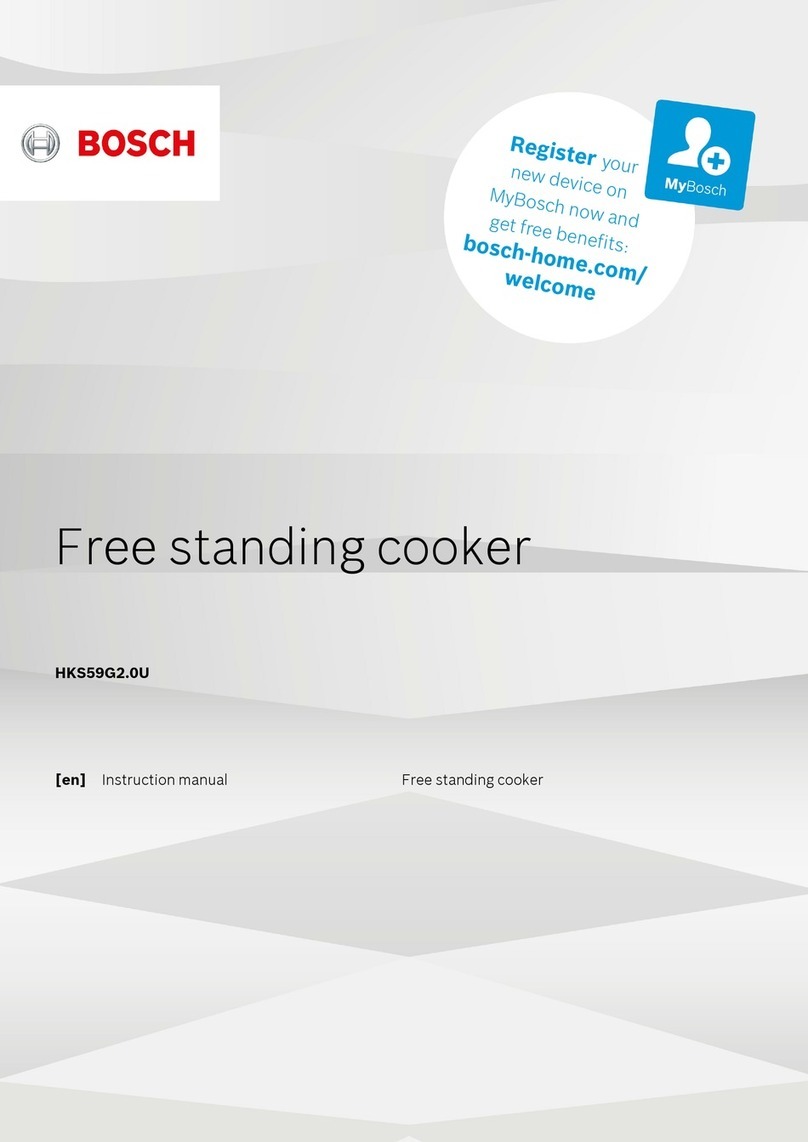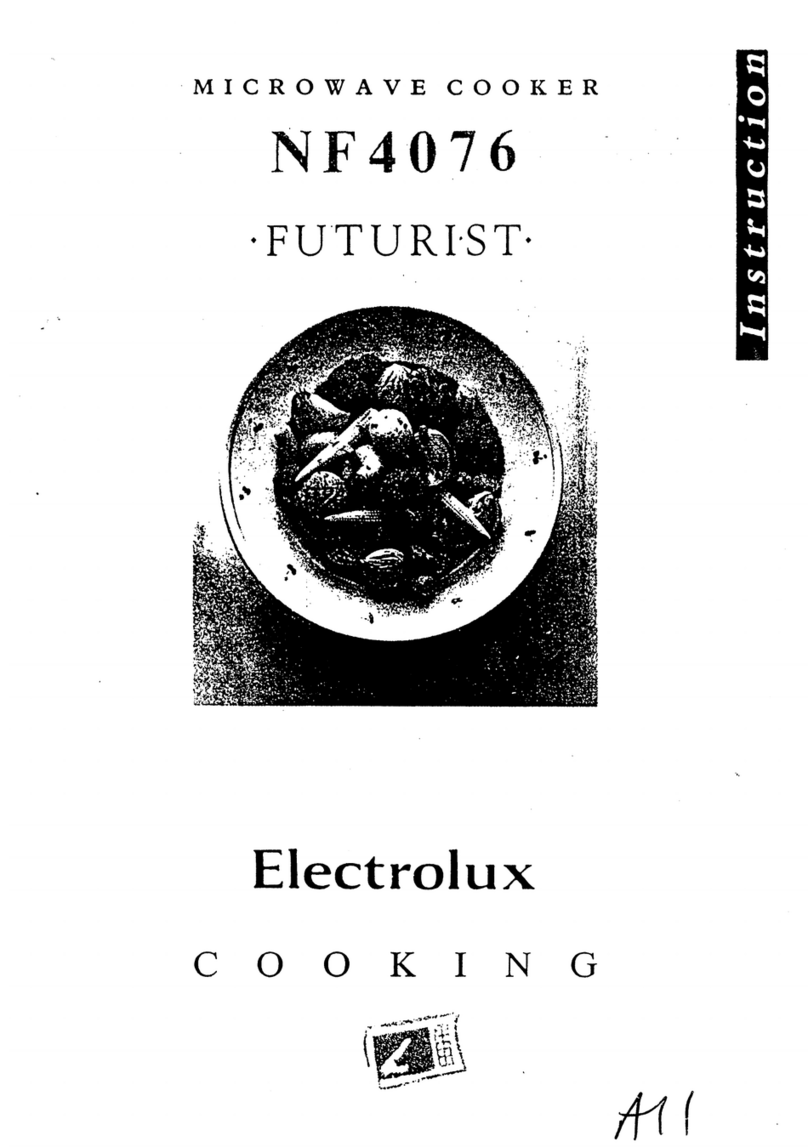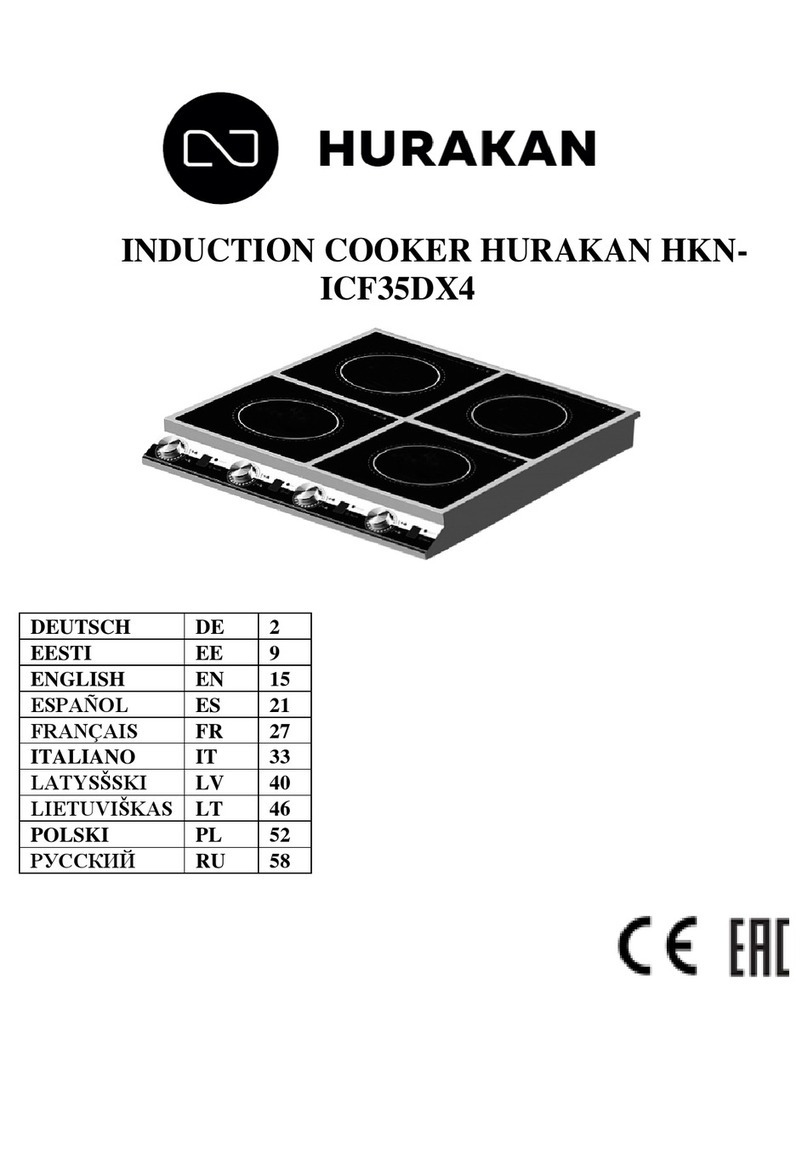Bayou Classic 300-100 User manual

OWNER’S MANUAL
SEAFOOD COOKER
For Questions and Information call us at:
1-800-864-6194 •Monday - Friday 7:30am - 4:30pm CST
KEEP THIS MANUAL FOR FUTURE REFERENCE
NOT FOR COMMERCIAL USE
Barbour International, Inc. •101 Cypress Way • Brandon, MS 39042 •www.thebayou.com
This manual is for Barbour International "Bayou Classic" products only. If you are using
another manufacturer’s product, refer to the manual supplied with that product.
READ MANUAL
BEFORE USE
SAFETY ALERTS, ASSEMBLY & OPERATING INSTRUCTIONS
GENERAL MAINTENANCE & STORAGE
MODEL
#300-100
100-QUART
MODEL
#300-160
160-QUART

THE PURPOSE OF THIS SAFETY ALERT SYMBOL IS TO ATTRACT YOUR ATTENTION TO POSSIBLE
HAZARDS AS YOU ASSEMBLE AND USE THIS PRODUCT.
THE PURPOSE OF THIS SAFETY ALERT SYMBOL INDICATES FAILURE TO FOLLOW WARNINGS COULD
RESULT IN FIRE OR EXPLOSION. PAY CLOSE ATTENTION TO THE INFORMATION WHICH FOLLOWS!
SAFETY SYMBOLS
The symbols and boxes shown below explain what each heading means. Read and follow all of the safety
warnings and instructions contained in this manual and on the cooker.
Carefully read and follow all WARNINGS, SAFETY PRECAUTIONS and OPERATING INSTRUCTIONS
contained in this manual and on the cooker.
DO NOT skip any of the warnings and instructions! SAVE THIS MANUAL FOR FUTURE REFERENCE.
Indicates an imminently hazardous situation which, if not avoided,
will result in death or serious injury.
Hazard or unsafe practices which could result in minor personal
injury, product, or property damages.
Hazard or unsafe practices which could result in severe property
damages, personal injury, or death.
WARNING
FAILURE TO FOLLOW THESE INSTRUCTIONS COULD RESULT IN FIRE OR EXPLOSION WHICH COULD
CAUSE PROPERTY DAMAGE, PERSONAL INJURY OR DEATH.
• This cooker is a high pressure gas appliance for OUTDOOR USE ONLY.
• This cooker does not have automatic thermostat controls so must be attended and monitored
at all times during use.
• This cooker is not intended to be used to fry turkeys!
DANGER
IF YOU SMELL GAS:
1. Shut off gas to the appliance.
2. Extinguish any open flame.
3. If odor continues, keep away from the appliance and immediately call your gas supplier or your
fire department.
WARNING
• Do not store spare LP cylinder within 10 feet (3 m) of this appliance.
• Do not store or use gasoline or other flammable liquids or vapors within 25 feet (8 m) of this
appliance.

DANGER
• Never operate this appliance unattended. A sober, adult must attend and monitor this appliance
at all times during use.
• Never operate this appliance within 10 feet (3.0 m) of any structure, combustible material or
spare gas cylinder.
• Do not fill cooking vessel with water beyond the recommended maximum fill amount.
• Heated liquids remain at scalding temperatures long after the cooking process. Never touch
the cooking appliance until liquids have cooled to 115˚F (45˚C) or less.
NOTE TO CONSUMER
This LP Gas Cooker is a specialized high pressure gas appliance having greater heat output than traditional
kitchen stoves. It is referred to as cooker and appliance in this manual and on warning tags. This cooker
does not have automatic thermostat controls so must be attended and monitored at all times during use.
This LP Gas Cooker is for OUTDOOR USE ONLY!
As with any cooking appliance, care must be taken to follow all Safety Precautions and Instructions in
order to achieve safe and satisfactory cooking results.
Restrict the use of this appliance to adults who can read, understand and follow the warnings and
instructions in this manual, and on the cooker. Safety Alerts alone cannot eliminate the hazards
that they signal. Strict compliance with these instructions, plus common sense operation, are primary
accident prevention measures.
If having any doubts or concerns about your ability to use this product contact Bayou Classic®.
Should you still have concerns about operating this product, then do not use. Contact your dealer for
return and refund. Remember; Think Safety and Use Common Sense!
IF FIRE OCCURS
In the event of a fire, do not attempt to extinguish with water. Immediately call your local Fire Department.
A Type BC or ABC dry chemical fire extinguisher may in some cases contain the fire.
If a fire occurs INSIDE THE COOKING VESSEL follow these steps.
• Turn off gas supply.
If a fire occurs OUTSIDE THE COOKING VESSEL follow these steps.
• Turn off the gas supply if possible.
• Call the local Fire Department if property damage is possible.
• Attempt to extinguish using a chemical fire extinguisher specified.
DANGER
1
WARNING
• Do not use this appliance for frying with oil/grease.
• Do not use this appliance for frying whole turkeys.
• Use only the regulator hose assembly that is supplied with this appliance.

2
Outdoor gas appliances do not have automatic thermostat controls
so must be attended and monitored at all times during use.
Safety Precautions & Warnings
Remember: Think Safety and Use Common Sense!
Failure to follow these instructions could result in fire or explosion
which could cause property damage, personal injury or death!
WARNING FIRE HAZARD READ MANUAL
BEFORE USE NEVER LEAVE
UNATTENDED
KEEP AWAY FROM
FLAMMABLE
OBJECTS
10-FT
NEVER USE ON
FLAMMABLE
SURFACES
KEEP FLAMMABLE
MATERIALS AWAY
25-FT
KEEP FIRE
EXTINGUISHER
NEARBY
TRIP HAZARD
WATCH YOUR STEP
INSURE PROPER
POSITIONING
20-IN
WIND
DIRECTION
ALWAYS PERFORM
GAS LEAK TEST
OUTDOOR USE
ONLY
NEVER USE UNDER
FLAMMABLE
OVERHANG
KEEP CHILDREN
AND PETS AWAY
FROM COOKER
NO BARE FEET DO NOT FRY!
HOT DURING AND
AFTER USE!

3
GENERAL OPERATING
•
This appliance does not have automatic thermostat controls so must be attended and monitored at all times
during use.
Even when burner is set at a low flame, never leave the cooker unattended.
• This appliance has an open flame. In sunlight or other bright light, the flame may be almost invisible.
Use extreme caution keeping hands, hair and clothing away from the cooker. Do not lean over the cooker
when lighting burner. Long hair and loose clothing can catch fire during lighting and operation.
• This is an ATTENDED appliance, DO NOT leave this appliance unattended while heating water, cooking
food or when hot after use (water above 115˚F: 45˚C). Heated liquid can remain at scalding temperatures
long after cooking has ended.
•Keep children and pets away from the cooking area at all times. Carefully monitor all activity around cooker
to avoid burns or other injuries.
• This appliance will be hot during and after use. Use insulated oven mitts or gloves for protection from hot
surfaces or splatter from cooking liquids. Always wear closed toe shoes while cooking with this appliance.
•Use caution when walking or standing near cooker as splatter may have created a slick surface. Do not walk
between cooker and propane tank as this creates a trip hazard. Tripping over the hose could overturn the
cooker causing severe burns.
•Avoid bumping of or impact with the appliance to prevent spillage or splashing of hot cooking liquid which
can cause sever burns.
• DO NOT move the appliance when in use. Allow cooking vessel to cool down to 115˚F (45˚C) before
moving, cleaning or storing.
•Should the cooker flame go out during use, turn all gas valves off. Wait 5 minutes for gas to evacuate before
re-lighting. See instructions in this manual for correct procedures.
• Never overfill a cooking vessel with water. Overfilled cooking vessels can boil over. Follow instructions in
this manual for establishing proper water level.
• After a period of storage or nonuse, check this appliance for gas leaks and burner obstructions before use.
See instructions in this manual for correct procedures.
•Sober adult operation ONLY! The use of alcohol, prescription or nonprescription drugs may impair the ability
to properly assemble or safely operate this appliance.
• DO NOT operate cooker without water in bowl as it could melt. Use caution when placing anything in a
cooking vessel while the appliance is in operation.
• Children can fall into cooking vessel and drown in even a small amount of liquid. Keep cooking vessel
out of reach of children. Do not store with liquid inside.
• When cooking, have a Type BC or ABC fire extinguisher readily accessible.
• This appliance is not intended for and should never be used as a heater.
• Do not use this cooker for other than its intended purpose.
• Only use replacement/accessory parts manufactured by Barbour International, Inc.
• Combustion by-products from the use of this product contain chemicals known to the State of California to
cause cancer, birth defects, or other reproductive harm.
•This product contains a chemical(s) known to the State of California to cause cancer, birth defects or other
reproductive harm.
WARNING

ASSEMBLY INSTRUCTIONS
READ ALL SAFETY WARNINGS & ASSEMBLY INSTRUCTIONS CAREFULLY BEFORE ASSEMBLING OR OPERATING
YOUR COOKER. Inspect contents in the box to ensure all parts are included and undamaged.
FOR MISSING PARTS OR ASSISTANCE, PLEASE CALL 1-800-864-6194 M-F 7:30am - 4:30pm CST.
Proof of purchase will be required.
TOOLS REQUIRED:
Two Adjustable Wrenches
PARTS INCLUDED:
1- Frame
COOKER ASSEMBLY
NOTE: Requires two people for assembly
1. Remove cooker from carton by lifting it out or by cutting the carton corners to flatten it.
2. Open lid and set contents aside for later use. (jet burner, hardware, regulator/hose)
4. Remove bowl and set aside for access to interior of cooker.
3. Remove basket and set aside.
4
4 - Legs
4 - Brackets
4 - Brackets
1 - Jet Burner
1 - Regulator Hose Assembly
1 - Spigot
24 - Acorn Nuts
36 - Bolts
12 - Nuts

4. For easier assembly, unscrew bolts/nuts at lid hinge and remove lid.
A
5. For easier assembly, rotate cooker onto front side. Attach both top legs using 4 bolts and 4 acorn nuts
for each leg. Note: Bolts go in from the inside and nuts go on the exterior of the cooker.
7. Rotate cooker onto back side. Repeat Step 5 and 6 for attaching legs and braces.
Note: Bolts go in from the inside and nuts go on the exterior of the cooker.
6. While cooker is on front side, attach 2 leg braces to each leg you just attached using 2 bolts and acorn nuts
on the leg connection and 2 bolts and standard nut on the frame connection. Note: Bolts go in from the inside
and nuts go on the exterior of the cooker.
ASSEMBLED
VIEW
Note:
2 braces per leg
ASSEMBLED
VIEW
5
B
B
A

8. While cooker is on back side, attach jet burner assembly with 4 bolts and nuts.
9. Carefully stand cooker up on the legs and reattach lid using 2 bolts and nuts that were removed in Step 4.
10. Reinstall the bowl with the drain outlet opposite of the gas inlet on the jet burner.
B
A
6
DRAIN
OUTLET
GAS
INLET
BA
B

12. Reinstall basket inside cooker. NOTE: Be sure that handle is on opposite side of the lid.
11. Install the spigot assembly.
FULLY ASSEMBLED VIEW
INSIDE
BOWL
WALL
ASSEMBLED
VIEW
ASSEMBLED
TOP VIEW
7
HANDLE
LID
O-RING FLAT
GASKET

8
Store upright with
Protective Cap
CLOSED
Cylinder
Valve
To check your local codes, see your local LP gas dealer or natural gas company. This cooker is not intended to be connected
to a natural gas supply line.
When purchasing or exchanging a cylinder for your gas cooker, it must be constructed and marked in accordance with the
specifications for LP gas cylinders by the U.S. Department of Transportation (DOT) or the National Standard of Canada,
CAN/CSA-B339, Cylinders, Spheres and Tubes for the Transportation of Dangerous Goods as applicable with a listed over-
filling device (OPD).
The cylinder must also be equipped with:
• A shut-off valve terminating in a POL gas cylinder valve outlet.
• An arrangement for vapor withdrawal.
• A collar to protect the cylinder shut-off valve.
• A safety relief device having direct communication
with the vapor space of the cylinder.
• A listed Over-filling Prevention Device (OPD).
• A protective cap on cylinder Type-1 Outlet.
OPD Handwheel
(Cylinder Valve)
Protective Cap
POL
Outlet
Safety Relief
Valve
LP GAS CYLINDER SPECIFICATIONS
WARNING
LP GAS CYLINDER
The LP (Liquid Propane) gas cylinder specifically designed to be used with this cooker must have a 20 lb (9.1 kg) capacity
incorporating a POL cylinder valve and an over-filling protection device (OPD).
• DO NOT connect to a propane cylinder exceeding this capacity.
• DO NOT connect to a cylinder that uses any other type of valve connection device.
WARNING
• Turn off the cylinder valve when your cooker is not in use.
• Handle the LP gas cylinder with care.
• Always secure the LP gas cylinder in an upright position.
• Never connect an unregulated LP gas cylinder to your cooker.
• DO NOT expose LP gas cylinders to excessive heat or ignition sources.
• Read and follow all warnings/instructions that are on the
cylinder and that accompany this product.
• Allow only qualified LP gas dealers to fill or repair your LP gas cylinder
• DO NOT allow the LP gas cylinder to be filled beyond 80% capacity.
NOT SUPPLIED WITH THIS COOKER
DANGER
• Never store spare LP gas cylinder near your cooker. This could cause excess pressure to be expelled
through the vapor relief valve resulting in fire, explosion, or severe personal injury, including death.
NOTE: PROPANE GAS IS HEAVIER THAT AIR AND WILL COLLECT IN LOW AREAS. PROPER VENTILATION IS
EXTREMELY IMPORTANT
• Keep the ventilation opening(s) of the LP gas cylinder enclosure free and clear from obstruction and debris.
• DO NOT insert any foreign objects into the valve outlet. Damage to the back-check could result.
A damaged back-check can cause a leak, possibly resulting in explosion, fire, severe personal
injury, bodily harm or death.
Use and store cylinder
in upright position

9
DANGER
This appliance can produce carbon monoxide which has no odor.
Using it in an enclosed space can kill you.
Never use this appliance in an enclosed space such as a camper, tent,
boat, car or home.
CARBON MONOXIDE HAZARD
LP GAS CYLINDER
• Use only a 20 pound LP Gas Cylinder or smaller with a protective collar.
•LP (propane) gas is colorless, tasteless, heavier than air, and is both flammable and explosive. Combustion of propane
consumes oxygen and produces carbon monoxide, a poisonous gas. Therefore, never operate an outdoor cooker
appliance inside a building or confined area where ventilation may be restricted. Make sure the LP cylinder and the
cooker are placed in an open area. DO NOT obstruct the flow of combustion and ventilation air.
• Never use a gas cylinder if it shows signs of dents, gouges, bulges, fire damage, erosion, leakage, excessive rust,
or other forms of visible external damage. The cylinder may be hazardous and should be checked by a qualified
liquid propane supplier.
• Never attach a gas cylinder, move or alter fittings while cooker is hot or in operation.
• Do not attempt to disconnect the regulator hose assembly while cooker is in operation.
• When cooker use is complete, always turn the LP cylinder valve OFF first, then turn the regulator control valve OFF.
Turning the cylinder OFF first allows remaining gas to flow out of the regulator hose assembly before the regulator
control valve is turned OFF.
• DO NOT use external electrical sources with this appliance.
•Storage of this appliance indoors is permissible only if the cylinder is disconnected and removed from the appliance
and left outdoors. Cylinders must be stored outdoors out of the reach of children and must not be stored in a building,
garage or any other enclosed area.
•The installation of this appliance must conform with local codes or, in absence of local codes, with the National Fuel
Gas Code, ANSI Z223.1/NFPA 54, Storage and Handling of Liquefied Petroleum Gases, ANSI/NFPA 58, Natural
Gas and Propane Installation Code, CSA B149.1, Propane Storage and Handling, CSA B149.2, or the Standard
for Recreational Vehciles, ANSI A119.2/NFPA 1192 and the Recreational Vehicle Code, CSA z240 RV Series.
•Refer to section about LP Gas Cylinder Information on page 10 in this manual.
WARNING
DANGER
A. DO NOT store a spare LP cylinder under or near a gas cooker appliance.
B. Never fill the cylinder beyond 80% full.
C. If the information in (A) and (B) are not followed exactly, a fire causing death or serious
injury may occur.
WARNING
FILLING THE LP GAS CYLINDER:
• Allow only qualified LP gas dealers to properly fill or repair your LP gas cylinder.
• New tanks should be purged prior to filling; inform LP gas dealer if you are using a new tank.
•
DO NOT allow the cylinder to be filled beyond 80% capacity. Over-filled tanks can create a dangerous condition.
Over-filled tanks can build up pressure and cause the relief valve to expel propane gas vapors. The vapor is combustible
and if it comes in contact with a spark source or flame; an explosion causing severe burns, bodily harm, or death could occur.
• Always use a protective cylinder cap when cooker is not connected to cylinder.
• If you exchange a cylinder with a qualified exchange program, be sure the cylinder has a POL valve and an
over-filling prevention device (OPD).

10
WARNING
Insure the cylinder valve is CLOSED prior to connecting the LP gas cylinder to your cooker. Turn the regulator control
knob to properly close the regulator valve. Read and follow all instructions and warnings on the supply hose safety
tags. Read and follow all warnings in this manual concerning the safe use of LP gas cylinders and the regulator
hose assembly, before connecting cylinder to cooker. Read and follow all warnings on the LP gas cylinder.
1. Check that cylinder is upright and the valve is closed by turning
the knob clockwise.
2. Remove the protective safety cap from the cylinder valve.
3. Insert the nipple of the POL connector into the valve outlet.
Insure that the coupling nut is centered properly.
4. Turn the large coupling nut counter-clockwise by hand and tighten
to a full stop. Take care not to cross thread the coupling nut
onto the cylinder valve. Do not over-tighten the control knob
on the regulator valve. Do not use tools to tighten connection.
NOTE: If you are unable to make the connection,
repeat steps 3 and 4.
5. Check that the hose does not contain kinks, does not come into
contact with sharp edges, and does not contact surfaces that may become hot during use.
6. Leak check all fittings before lighting cooker.
CONNECTING REGULATOR HOSE ASSEMBLY TO LP GAS CYLINDER
Upright
position
• The pressure regulator hose assembly supplied with this product must be used.
• Clean and inspect the hose before each use for any evidence of abrasion, wear, cuts or leaks. Hose must
be replaced prior to use if any of these issues are found. Only use manufacturer recommended replacement
assembly.
• Replace regulator hose assembly at least every two years.
• Keep the fuel supply hose away from any heated surface.
• Refer to instructions for connecting regulator hose assembly to LP gas cylinder and burner in this manual.
• The valve on regulator hose assembly controls the flame intensity only, it is not an ON/OFF valve.
• DO NOT attempt to connect to any other fuel supply source such as a natural gas line.
•
DO NOT attempt to adjust or repair the regulator. A replacement can be supplied by contacting the manufacturer.
• DO NO attempt to disassemble the regulator assembly.
WARNING
REGULATOR HOSE ASSEMBLY
Disconnect from Tank
CLOCKWISE
Handwheel Connects
Hose Assembly
to Propane Tank
Connect to Tank
COUNTER-CLOCKWISE
PRESET REGULATOR
WITH VALVE
Increase or Decrease gas flow
by turning the valve as
indicated on the valve knob.
Turn Coupling Nut
COUNTER-CLOCKWISE
to Attach. Hand Tighten!

11
Turn CLOCKWISE
Wrench Tighten
CONNECTING REGULATOR HOSE ASSEMBLY TO COOKER
The Regulator Hose Assembly is a pre-assembled unit. Do not take apart. Simply connect the regulator hose assembly to the
LP gas cylinder and to the cooker. An adjustable wrench is needed when attaching the hose to the burner. Visually inspect
the regulator hose assembly prior to each use. If there is evidence of abrasion, wear, cuts or leaks, the hose must be replaced
prior to the appliance being put into operation.
Attach hose connector to the burner as shown below.
WARNING
WHEN TO PERFORM A LEAK TEST
• After assembling your cooker and before lighting for the first time, even if purchased fully assembled.
• Every time the LP gas cylinder is refilled or if any of the gas components are replaced.
• Any time your cooker has been moved.
• At least once per year or if your cooker has not been used for more than 60 days.
GAS LEAK TESTING
To prevent fire or explosion hazard:
• DO NOT smoke or permit ignition sources in the area while conducting a leak test.
• Perform test OUTDOORS only in a well ventilated area.
• Never perform a leak test with a match or open flame.
• Never perform a leak test while the cooker is in use or while cooker is still hot.
DANGER

12
GAS SUPPLY HOSE
Watch for Bubbles
GAS LEAK TEST INSTRUCTIONS
Note: The gas leak test must be performed in an area that has adequate lighting
in order to see if bubbles are developing. DO NOT use a flashlight
to check for bubbles.
1. Create a mixture of 50% water and 50% liquid no-ammonia base
dishwashing soap.
2. Turn the gas cylinder valve to the OFF position (clockwise).
Then turn regulator control knob to OFF position
(as indicated on knob).
3. To turn ON the fuel supply, turn the cylinder valve knob one turn
in the ON direction or OPEN direction. Gas will flow through
and stop at the regulator.
4. Using a clean brush or spray bottle, apply the soap water mixture
to the following:
Cylinder Valve to Cylinder
Connection Nut to Cylinder Valve
Back side of Connection Nut to Brass Nipple
Control Knob on Regulator
Regulator connection to Gas Supply Hose
LP Cylinder Welds
Full length of Gas Supply Hose
Gas Supply Hose connection to Burner Assembly
5. Check each place A - F for growing bubbles which indicates a leak.
6. Next, turn ON regulator control knob to permit gas to pass
through the hose. Check each place listed for growing bubbles,
G & H, which indicates a leak. NOTE: Do not allow gas to flow
more than 5 - 10 seconds while checking for leaks, and then
turn off gas supply at the cylinder. During this process, gas will be
flowing out the burner into the air.
7. Turn OFF gas cylinder valve (clockwise) on LP Gas Cylinder.
8. Turn regulator control knob to OFF position.
9. Tighten any leaking connections.
10. Repeat soap water mixture test until no leaks are detected.
DO NOT use cooker if gas leaks cannot be stopped.
11. If no leaks are detected, leave the gas supply at cylinder valve
and regulator turned off untill you are ready to use product.
12. Wash off soapy residue with cold water and towel dry.
13. Wait 5 minutes to allow all gas to evacuate the area
before lighting burner.
IJ
I
J
I
J
I
J
If growing soap bubbles persist throughout any portion of the Gas Leak Test, terminate use immediately.
For assistance, contact your propane dealer or Barbour International, Inc. at 1-800-864-6194.
WARNING

Wind Direction
10 ft.
Clearance 20 in.
Minimum
Make sure overhead is clear of combustible materials!
WARNING
PLACEMENT OF COOKER
•This cooker shall be used OUTDOORS ONLY. DO NOT use in a building, home, garage, balcony, porch,
tent or any other enclosed area. Gas cookers shall not be used on or under apartment, condominium
balcony or deck. DO NOT install or use in or on recreational vehicles or boats.
• DO NOT operate this Gas Cooker closer than 10 feet(3m) from any combustible materials including walls
or railing, or under overhead construction and tree branches as these materials could ignite should oil/grease
fire occur.
• The cooker must be positioned on a level, stable, noncombustible surface such as brick, concrete or dirt.
Do not position cooker on wood, asphalt or plastic which may burn, blister or melt.
• Do not use on combustible flooring or surfaces such as wooden decks.
• Keep the cooking area clear and free of any combustible material such as household chemicals, paint,
gasoline and other flammable vapors and liquids. Do not store or use gasoline or other liquid/aerosols
with flammable vapors within 25 feet (7.5m) of this cooker.
• Prior to lighting the burner, check wind direction for placement of cooker DOWNWIND from upright
LP cylinder. The cooker must be DOWNWIND and at least 20" away from the LP cylinder to keep heat away
from LP cylinder.
• Check that gas supply hose does not contact surfaces that may become hot during use.
•Installation of this product must conform with local codes or, in the absence of local codes, with the National
Fuel Gas Code. ANSI Z223.1/NFPA 54, Storage and Handling of Liquefied Petroleum Gases, ANSI/NFPA
58, Natural Gas and Propane Installation Code, CSA B149.1, Propane Storage and Handling, CSA B149.2,
or the Standard for Recreational Vechicles, ANSI A119,2/NFPA 1192 and the Recreational Vehicle Code,
CSA z240 RV series.
10 ft.
Clearance
13
For use with cooking vessels that have and do not have Maximum Fill Line
HOW TO DETERMINE PROPER AMOUNT OF LIQUID FOR COOKING
WARNING
If too much water is inside the cooking vessel, it is possible for spillovers to occur when adding food product,
or during a rolling boil. Spillover of hot liquids can cause severe burns and property damage. Carefully read
and follow these instructions.
BOILING: WATER LEVEL DETERMINATION
1. Place the food product in the strainer basket.
2. Place the food product and strainer basket into the empty vessel.

14
WARNING
Read, understand and follow all warnings and instructions contained in this manual. DO NOT skip any of the
warnings and instructions contained in the preceding sections of this manual.
CAUTION
Once a rolling boil is achieved, reduce cooker flame to maintain the desired level. Lowering cooker flame
reduces chance of a boil over during cooking.
BOILING INSTRUCTIONS
1. Follow instructions to properly assemble and position the cooker. Perform gas leak test, and water level determination.
2. Add the determined amount of water into the cooking vessel.
3. Light the cooker, then increase flame height by turning control valve as directed. NOTE: Spend a few moments to adjust
the flame up and down to become familiar with flame adjustment process.
4. Depending on the volume of water used, heat up time can vary. Covering the cooking vessel with lid will accelerate water
heat up time to the boiling point.
5. Once water has achieved a rolling boil, reduce cooker flame as low as possible by turning regulator valve as directed.
6. Using an insulated mitt, carefully open lid.
7. Using an insulated mitt, carefully lower the food basket into the boiling water, then close lid on the cooking vessel.
NOTE: Immersing the food basket will quickly reduce water temperature.
8. Increase cooker flame to desired level by turning regulator control valve as directed. It will take several minutes for water
temperature to increase and achieve a rolling boil.
BOILING: WATER LEVEL DETERMINATION - CONTINUED
3. Add water into the vessel until the food product is completely submerged. There must be a minimum of 3 inches between
the water level and top of the vessel.
4. Remove the food product from the vessel. The remaining water level indicates the amount needed to cook the food product.
Typically, the amount of water needed for boiling is one-third full or less.
FOLLOW "3-MINUTE:15-MINUTE" BOILING RULE
Boiling time varies with type of food being cooked. Seafood generally has the shortest boiling time.
For superior cooking results, follow these simple steps:
1. Heat water to rolling boil.
2. Reduce cooker flame and carefully lower food into boiling water and close lid.
3. Increase cooker flame and cook until a rolling boil is achieved.
4. Leaving lid closed, reduce cooker flame and allow rolling boil to continue for 3-minutes.
5. After 3-minutes have passed, shut off gas to the cooker. Leave the lid closed and allow to set another 15-minutes.
During this 15-minute period, the food will continue to cook and absorb seasoning without being over-cooked. Generally,
the "3-minute:15-minute" rule results in shrimp and crawfish being perfectly cooked, seasoned and easy to peel.
5. Carefully pour out the food product and… enjoy!
WARNING
• Use extreme caution when lifting a food basket from boiling water.
• Be certain cooker is turned off.
•In addition to an insulated mitt, wear shoes, long pants and shirt sleeves to prevent burns from splashing hot water.

Turn on the fuel supply by S-L-O-W-L-Y rotating the tank/cylinder valve one full turn in
the OPEN direction.
4
6If flame fails to light within 3 - 5 seconds, turn off gas flow by rotating the regulator
valve in the CLOSE direction until it stops. Allow gas to evacuate/dissipate before
attempting to relight the burner by repeating step 6. NOTE: If the cooker does not light
within the first few attempts, there is a problem with the gas supply. Turn off the gas
at the tank/cylinder and regulator. DO NOT attempt to operate the cooker until the
problem is found and corrected. Refer to troubleshooting section of this manual.
15
Follow the instructions exactly. You should have already assembled hose/regulator to supply tank/cylinder and
cooker. You should have already leak checked the connections, as instructed in this manual, prior to attempting
to operate the cooker.
Position fire place match or long lighter over the
jet tube, then S-L-O-W-L-Y turn regulator control
valve until you hear gas HISSING from the burner.
Burner should light immediately.
CAUTION: The flame may be difficult to see in direct
sunlight. Do not remove match or lighter until you
are sure flame is lit.
5
LIGHTING INSTRUCTIONS
WARNING
DO NOT stand with head, body or arms over the cooker when lighting. Loose clothing and hair can catch fire.
1Look at the tank/cylinder valve knob and the top will be labeled with the direction you
need to turn it to OPEN (let gas flow) or CLOSE (shut gas flow off).
Make sure the tank/cylinder valve is in the OFF position.
Check this by rotating the valve in the CLOSE direction until it stops.
Look at the regulator control valve and the top will be labeled with the direction you
need to turn it to OPEN (let gas flow) or CLOSE (shut gas flow off). Make sure the
regulator control valve is in the OFF position. Check this by rotating the valve in the
CLOSE direction until it stops.
2
Make sure you have water in the bowl prior to lighting the cooker.
An empty bowl can burn through very quickly and permanently damage
the bowl.
3

NOTE: The regulator control knob controls flame intensity only.
It is not an ON/OFF valve. Practice rotating the regulator
control knob to become familiar with flame adjustment.
7Adjust the regulator valve for the desired flame height.
HOW TO REIGNITE
If burner flame does NOT ignite immediately, or is accidentally extinguished, turn LP Gas Cylinder Valve to OFF.
Then turn regulator valve to OFF position. Wait 5 minutes for gas to evacuate before re-lighting, then repeat steps
1 -6 to re-light. Always use caution when re-lighting as cooker frame and cooking vessel will be hot.
If the cooker does not light within the first few attempts, there is a problem with the gas supply. Turn off the gas
at the cylinder and regulator. DO NOT attempt to operate the cooker until the problem is found and corrected.
Refer to Troubleshooting on Page 25.
TURNING OFF THE COOKER AND DISCONNECTING HOSE
NOTE: Turn off LP gas cylinder valve first to prevent gas from being left in the regulator hose system under pressure.
1. Turn OFF the LP gas cylinder valve by rotating in the CLOSE direction until it stops.
2. Turn regulator valve to the OFF position by rotating in the CLOSE direction until it stops.
3. To disconnect Regulator Hose Assembly, turn the large coupling nut clockwise by hand.
Turn OFF
LP Cylinder.
Close Valve Fully
1
Turn OFF Regulator.
Close Valve Fully
2
16
Disconnect
Regulator
3Turn Coupling Nut
CLOCKWISE
to Disconnect
WARNING
The LP gas cylinder valve must always be in the OFF or closed position when the cooker is not in use.
PRE-COOKING CHECK LIST AND OPERATING INSTRUCTIONS
WARNING
DO NOT operate this cooker until you have read and understand ALL of the warnings and instructions in this
manual. Property damage, bodily harm, severe burns and death could result from failure to follow these safety
steps. These steps should be performed after the cooker has been assembled, stored, moved, cleaned, or repaired.
1. Insure that the cooker is properly assembled and connected to propane cylinder.
2. Position the cooker on level ground in a well ventilated location, at least 10-ft from combustible materials,
tree branches, buildings and overhangs. Propane cylinder should be positioned upwind from cooker so the
heat of cooker does not reach cylinder.
3. Inspect the gas supply hose for burns, chaffing, kinks and proper routing before each use. Hose should be
positioned at least 3 inches away from hot surfaces.

USING THE COOKER
1. Connect hose and regulator to the jet burner inlet.
2. Attach regulator to LP Cylinder tank. A 40-lb tank recommended. A 20-lb tank will work, but it needs to be
full when starting.
3. Make sure spigot drain valve is closed.
4. Fill with water to about 2/3 the capacity of the bowl.
5. Perform leak check of gas system.
6. Turn on the LP tank valve 1 full turn.
7. Turn on the regulator valve as you hold a long lighter or match over the first jet burner. Increase the gas flow
by rotating the regulator valve in the open direction until the burner lights.
8. Pass match or lighter over the other burners to ignite them as well.
9. Open LP tank valve fully and open regulator valve fully for maximum power.
10.The outer surface of the cooker will get hot as well as the handles of the basket and lid. Always use
protective gloves when opening lid or lifting basket.
11.Follow recipe instructions to cook the food.
4. Leak check all gas connections on regulator hose assembly, LP cylinder valve and weld seams.
5. Determine proper amount of liquid for cooking, page 16.
6. Follow Lighting and Re-lighting instructions on pages 17 - 18.
7. Use extreme care when lowering food and utensils into and removing from hot liquid.
8. When cooking is completed, turn off gas to the cooker. Follow Disconnecting Instructions in this manual.
9. Follow General Maintenance and Storage Instructions on page 22.
17
ADDING CRAWFISH OR FOOD
1. Open lid fully
2. Before adding food, lift basket far enough that you can rotate the basket lock up and over so that it sits under
the basket. NOTE: One person should lift basket from the back by the handle in the center or two people can
lift the basket with the handles on the side.
Carefully and s-l-o-w-l-y pour in food so as not to splash hot water.
NOTE: Always pour away from you. Lift basket, remove lock and s-l-o-w-l-y lower basket into boiling water.
S-L-O-W-L-Y
POUR FOOD
S-L-O-W-L-Y
LOWER FOOD
BASKET
LOCK

18
DUMPING FOOD
1. Lower the power on the burners by reducing the gas flow on the regulator valve.
2. Open the lid fully and place a cooler or other container at the end to catch the food.
3. Close lid so the water can come back to a boil.
3. Single person should lift basket from the back by the handle in the center or two people can lift the basket with
the handles on the side.
4. Lift basket far enough that you can rotate the basket lock up and over so that it sits under the basket.
5. Lower the basket onto the basket lock so that the water can drain from the food.
7. Reset basket and you are ready to cook more food.
6. After all water is drained, rotate the basket over so that the food spills out onto the lid and goes into the awaiting
container or cooler.
S-L-O-W-L-Y
COOLER
COOLER
BASKET
LOCK
COOLER
COOLER
ROTATE
BASKET
This manual suits for next models
1
Table of contents
Other Bayou Classic Cooker manuals
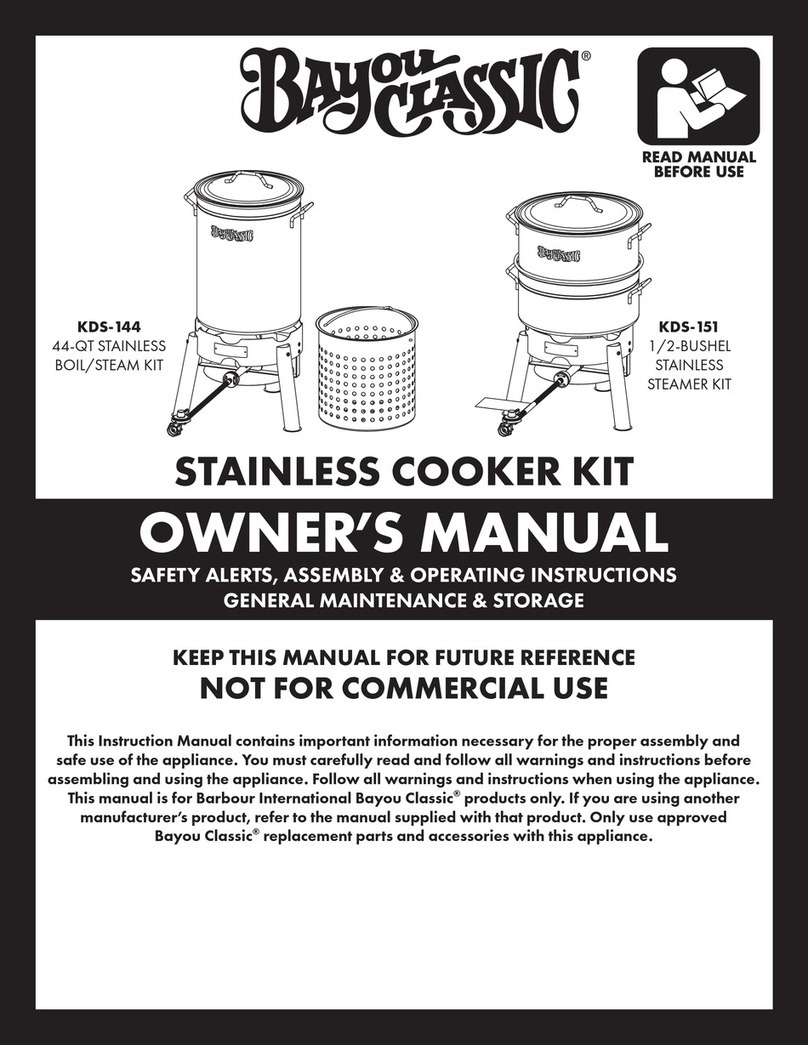
Bayou Classic
Bayou Classic KDS-151 User manual

Bayou Classic
Bayou Classic SP10 User manual

Bayou Classic
Bayou Classic KAB4 User manual

Bayou Classic
Bayou Classic SP16 User manual
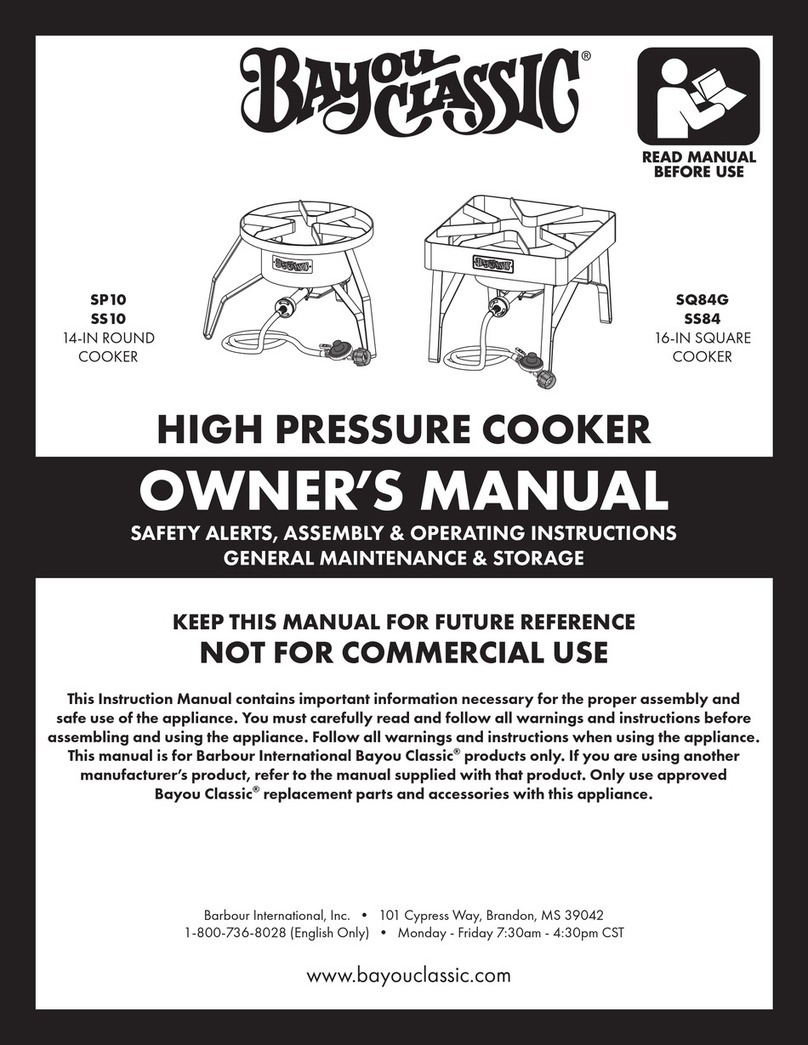
Bayou Classic
Bayou Classic SS10 User manual
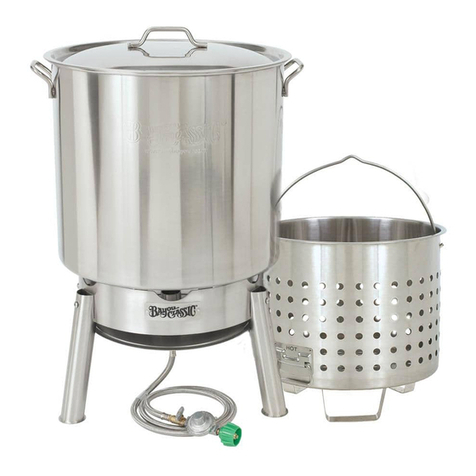
Bayou Classic
Bayou Classic KDS-1 User manual

Bayou Classic
Bayou Classic 2212 User manual

Bayou Classic
Bayou Classic SP31 User manual

Bayou Classic
Bayou Classic KDS-144 User manual


